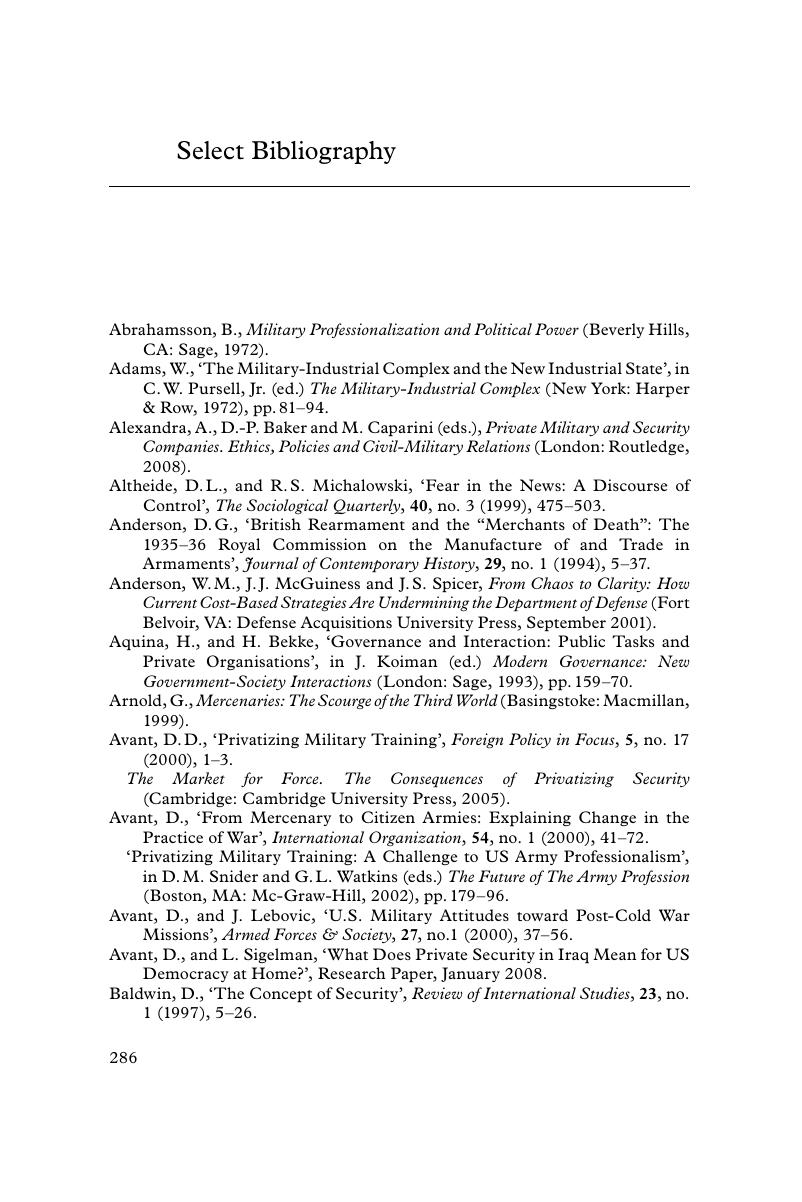Book contents
- Frontmatter
- Contents
- List of illustrations
- Acknowledgements
- Acronyms
- 1 Introduction
- 2 The state monopoly on collective violence and democratic control over military force
- 3 The transformation of the state and the soldier
- 4 United Kingdom: private financing and the management of security
- 5 United States: shrinking the state, outsourcing the soldier
- 6 Germany: between public–private partnerships and conscription
- 7 Iraq and beyond: contractors on deployed operations
- 8 The future of democratic security: contractorization or cosmopolitanism?
- 9 Conclusion
- Select Bibliography
- Index
- References
Select Bibliography
Published online by Cambridge University Press: 05 July 2011
- Frontmatter
- Contents
- List of illustrations
- Acknowledgements
- Acronyms
- 1 Introduction
- 2 The state monopoly on collective violence and democratic control over military force
- 3 The transformation of the state and the soldier
- 4 United Kingdom: private financing and the management of security
- 5 United States: shrinking the state, outsourcing the soldier
- 6 Germany: between public–private partnerships and conscription
- 7 Iraq and beyond: contractors on deployed operations
- 8 The future of democratic security: contractorization or cosmopolitanism?
- 9 Conclusion
- Select Bibliography
- Index
- References
Summary

- Type
- Chapter
- Information
- States, Citizens and the Privatisation of Security , pp. 286 - 301Publisher: Cambridge University PressPrint publication year: 2010



